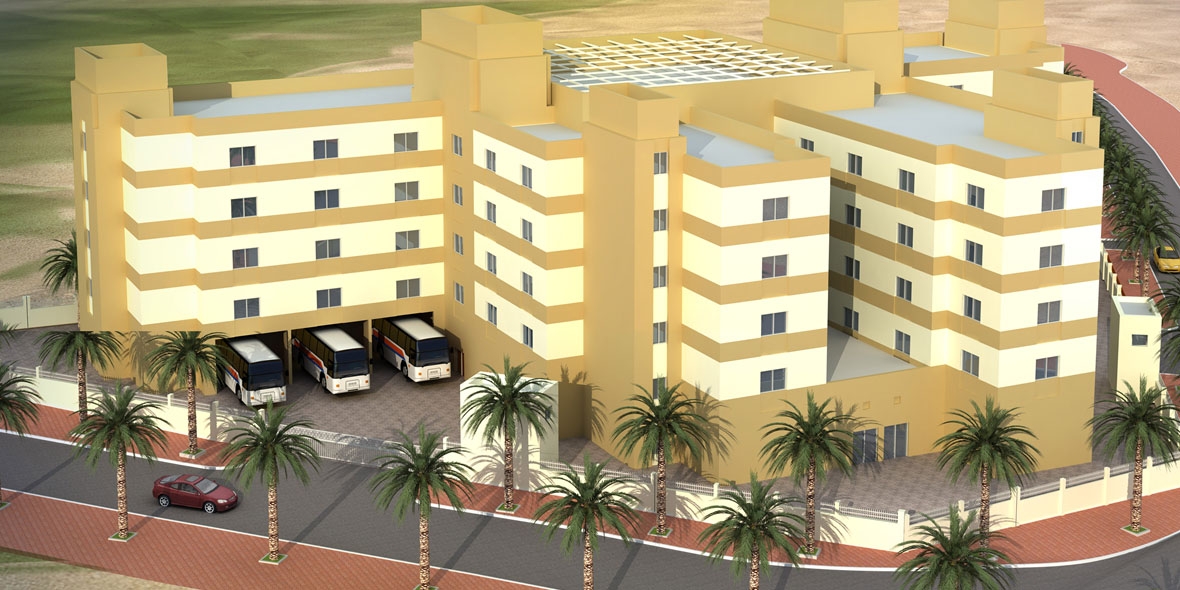VATP003 – VAT Public Clarification – Labour accommodation: residential versus serviced property
Issue
Labour camps and labour accommodation are generally areas where labourers are housed by their employers. They can take many different forms and some may provide residents with additional services on top of the living accommodation. It is therefore necessary to consider on a case by case basis whether labour accommodation is:
- A residential building, and therefore exempt from VAT (or zero-rated if the first supply); or
- Serviced accommodation, and therefore standard rated.
Summary
There will be instances where the supply of certain labour accommodation shall be a supply of residential property, and other instances where the supply of certain labour accommodation shall be a supply of serviced accommodation. The distinction is important as it will affect the VAT liability of the supply. Suppliers are required to consider the extent of the additional services supplied along with the accommodation in order to determine the nature of the supply. Suppliers should also consider whether they are making a single composite supply, or whether they are making a mixed supply of several different component parts.
Detailed discussion
Labour accommodation as residential property
As mentioned in Paragraph 3.5 of the Real Estate guide, labour accommodation will be considered to comprise of lodgings which are to be treated as residential buildings where:
- The building or lodging is occupied by the employees as their principal place of residence;
- It is a building which is fixed to the ground and which cannot be moved without being damaged;
- The building has been constructed or converted with lawful authority; and
- It is not a building which is similar to a hotel, motel, bed & breakfast establishment, or serviced apartment for which services in addition to the supply of accommodation are provided.
Labour accommodation as serviced accommodation
In certain cases, residents may be provided with additional services on top of the living. accommodation. In such cases, it is necessary to consider whether the extent of the additional services provided would move the supply from one of residential accommodation to serviced accommodation. Each scenario must be assessed on its actual facts.
Services normally supplied along with residential accommodation
It is normal that a supplier of residential accommodation may provide certain services as ancillary to the main supply. Where those additional services are incidental to the main supply of accommodation and not provided for an additional fee, they should not normally cause the supply to become one of serviced accommodation. Such incidental services may include, but are not limited to, the following:
- Cleaning of communal areas;
- Maintenance services required for the general upkeep of the property;
- Pest control;
- Garbage collection;
- Security;
- Utilities e.g. electricity, water, etc;
- Access to facilities within the building for residents to use themselves, e.g. launderette facilities, gym, pool, prayer rooms etc.
Additional services indicating a supply of serviced accommodation
The additional services which may indicate that the supply is one of serviced accommodation, rather than residential accommodation, includes but is not limited to the following:
- Telephone and internet access
- Cleaning of the rooms, other than purely the communal areas of the property;
- Laundry services, including the regular changing of bed linen;
- Catering;
- Maintenance services other than those required for the general upkeep of the property.
Mixed versus composite supplies
Suppliers of labour accommodation should also consider whether they are making a single composite supply (of either residential accommodation, or serviced accommodation based on the above), or whether they are making a mixed supply with separate component parts.
Where a single composite supply is made, the entire consideration for the supply shall be subject to the VAT treatment of the principal component.
Where a mixed supply is made, each component part must be valued and the correct VAT treatment applied to each component part.
In accordance with Article 4 of the Cabinet Decision No. 52 of 2017 on the Executive Regulations of the Federal Decree-Law No. 8 of 2017 on Value Added Tax, a single composite supply shall exist in the following cases:
a. Where there is a supply of all of the following:
- A principal component
- A component or components which either are necessary or essential to the making of the supply, including incidental elements which normally accompany the supply but are not of a significant part of it; or do not constitute an aim in itself, but are instead a better means of enjoying the principal supply.
b. Where this is a supply which has two or more elements so closely linked as to form a single supply which it would be impossible or unnatural to split.
Where it is considered that a single composite supply is being made, based on the above, the following facts must also be taken into account:
a. The price of the different components of the supply is not separately identified or charged by the supplier.
b. All components of the supply are supplied by a single supplier.
As a result of the above, even where it is considered that a single composite supply is being made, it shall be prevented from being treated as such if the various components are supplied by different suppliers or where the prices of each component are separately listed out.
Simply charging a single price does not, however, automatically mean a single composite supply is being made e.g. if there is not an identifiable principal component.
Where a supplier supplies more than one component for one price and the supply is not a single composite supply, then the supply of the components shall be treated as multiple supplies i.e. whether they are subject to VAT or not.

Leave a Reply